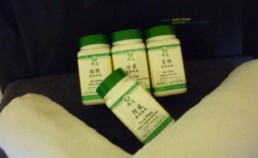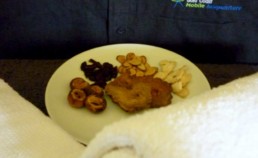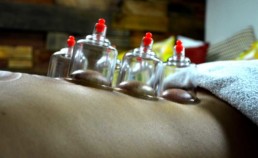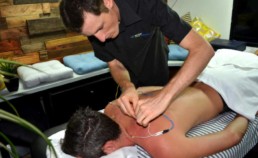Adjunct Treatments
Not just highly trained in the use of Acupuncture, Simon is a Chinese medicine practitioner, as such he can employ the use of a range of therapeutic techniques to work alongside, including Chinese herbal medicine, cupping, electro-acupuncture, moxibustion, gua sha and tui na. They all have their own particular strengths and can be used either on their own, or in combination to treat the body.
Chinese Herbal Medicine
Chinese herbal medicines (CHM) are mainly plant based. They can be packaged as powders/granules, pastes, lotions or tablets, depending on the herbs and the intended use. Granulated herbs are very effective and the form of choice of many practitioners because of how strong and effective they are, plus they are in an easy-to-take form (simply add to warm water and drink), so patient compliance is easy.
CHM is based on the same theory and principles of acupuncture – Chinese medicine. This includes a holistic approach to understanding normal function and disease processes. It also focuses much on the prevention of illness. The two complement each other so well that when combining the herbs with regular acupuncture, patients can gain the best possible outcomes.
It is important to remember that although two people present with the same condition (such as fatigue), the way it presents in each individual can be very different. The underlying cause of the condition can be quite different as well, meaning there is not a single herbal formula for something that has been medically diagnosed as a particular condition. A Chinese herbalist is able to prescribe, modify and even put together a Chinese herbal formula together from scratch (by combining different single herbs). This enables practitioners to make a unique formula that is tailored to a particular individual, one which accurately matches and treats the way the disease presents. Because of this, a herbalist requires a more detailed case history through asking various questions, with particular emphasis given to the pulse and observation of the tongue. Treatment can be modified as the condition improves by modifying the composition of the herbal formula until the desired outcome is achieved.
A snapshot of conditions typically treated with CHM include:
- Insomnia
- Fatigue
- Low appetite & digestive complaints
- Constipation & diarrhoea
- Irritable bowel syndrome
- Common cold/flu
- Headaches
- Skin conditions
- Anxiety, depression & stress
- Allergies
- Rheumatoid & Osteoarthritis
- PMS & menstrual complaints
- Infertility
- Fluid retention
- Disorders associated with menopause
In addition to treating a large range of health disorders, CHM can also be used to assist with general health maintenance and disease prevention. By enhancing and promoting normal body functions, the immune system is boosted and so too is a general sense of well-being.
Cupping
Cupping involves the creation of a relative vacuum over an area of skin that pulls Qi (energy) and Blood into an area. It has the effect of simulating the flow of Qi and Blood in the area. It is commonly used in the treatment of many musculoskeletal complaints and is most effective for tight muscles and clearing local stagnation from the muscular system.
A recent study used near-infrared spectroscopy to investigate effects of cupping. They found it enhances oxygen uptake through increasing the concentration of oxygenated haemoglobin of blood in the area surrounding the cupping site, both during and after treatment. This cupping induced oxygen elevation in the local tissue can help in repair, giving rise to its positive therapeutic effects. 3 4
Electro-acupuncture
Electro acupuncture is a relatively new adaption of regular acupuncture. It typically involves electro-stimulation to the needles via a battery-powered unit that delivers mild pulses of electric current. The frequency, intensity and pattern of the pulses delivered through the needles can be altered accordingly. It can excel at treatment of the painful conditions that are affecting the musculoskeletal system.5
Tui Na/Gua Sha
Gua sha and tui na are both massage techniques used by Chinese medicine practitioners. Gua sha is performed by rubbing a smooth edged tool across the skin. A positive response is reddening of the skin, which will reduce heat and inflammation, dispel wind and cold, bringing relief of pain from the superficial and deeper levels of the body. Gua sha and tui na are commonly used for musculoskeletal complaints, but also have their uses in the treatment of other conditions such as colds/flus, headaches, indigestion and other complaints 6
Moxibustion
Moxibustion involves the burning of the herb, Artemesia Vulgaris (commonly known as mugwort or moxa) either on or near the acupuncture points of the body. Moxa stimulates Qi and Blood flow, warms, adds Yang to the system and dispels Cold and Damp. It is most useful in treating situations of deficient Qi or Yang, or in any condition where Cold is a predominant feature. Because of this, moxa can be used in the treatment of arthritis, digestive issues, gynaecological complaints and protection against the common cold and flu, amongst others 7






